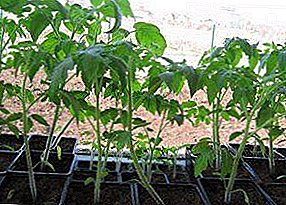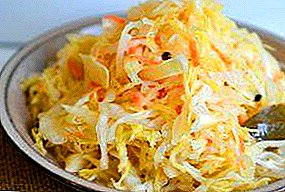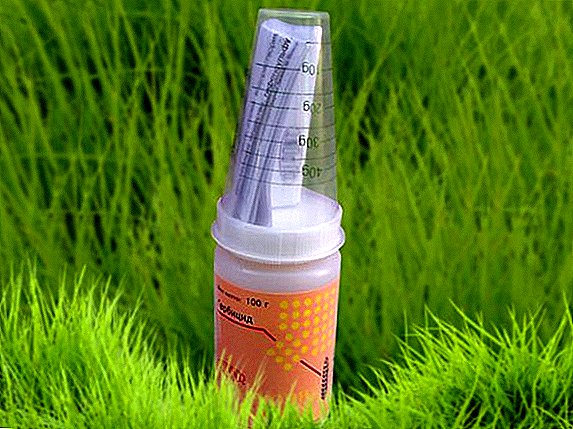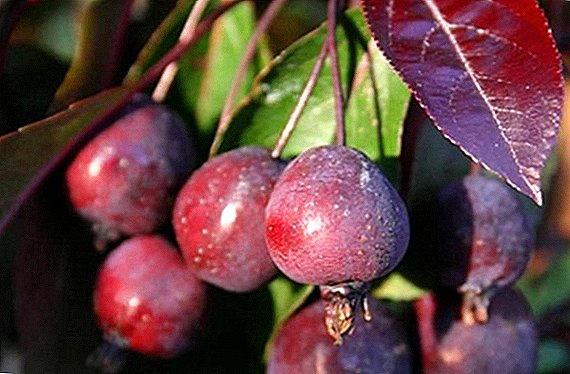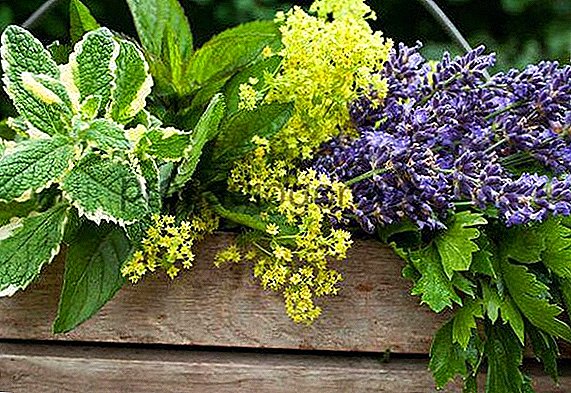
Medicinal plants - one of the main therapeutic and prophylactic medicine. Useful herbs are used for general body strengthening and in the treatment of specific diseases.
The medicinal herbs and plants described in the article are, of course, known to you - at least you are familiar with their names. But we will try to get to know them better and tell you about the 10 most useful plants for humans.
Echinacea
Echinacea purpurea is a herbaceous plant, the birthplace of which is located in the western part of the United States, where it can be found in wild form on sandy slopes and grass covered hills. 
Echinacea is a close relative of a garden daisy, it is striking with its large flowers with purple petals.
In the western pharmaceuticals, the plant, like some other healing herbs, came from Indian traditional medicine, where Echinacea decoction was used to treat wounds and snakebites.
Modern use of echinacea is based on the inherent plant antimicrobial properties and its ability to strengthen the immune system, stimulating the body to produce more leukocytes and interferon - a protein that kills viruses. 
Indications for use of echinacea are many and varied: respiratory diseases, bronchitis, sinusitis, herpes, diseases of the urogenital system, ventricle and intestines, otitis, diseases of the musculoskeletal system, viral and bacterial infections, chronic fatigue.
Important! Prescribe a course of treatment, determine how to dose the medicinal plants and the method of their use can only the attending physician.Standardized preparations of echinacea are produced in the form of tablets, capsules, alcohol tinctures, and in folk medicine a decoction of dried flowers is used: pour a teaspoon of dried flowers with a glass of boiling water.
Rosehip
Brier - a shrub up to two or three meters, the branches of which are densely dotted with spikes. The leaves are complex, the flowers are large - pink, sometimes white. Fruits are oblong-rounded, light red, up to 2 cm in diameter. 
You can meet wild rose among shrubs on the forest edges.
Rose hips contain a large amount of vitamins: C, groups B, K and P, they contain fruit sugars, organic acids, tannins.
Rose hips are most commonly used to treat conditions caused by vitamin deficiency, anemia, and general exhaustion. Rosehip preparations stimulate bile secretion, and are therefore recommended for some liver diseases. The flesh of ripe rose hips is a laxative with a slight effect.
In order to give a better taste of rosehip infusion, a little sugar is added to it, and some of the fruits can be lightly fried before infusing - this will give the drink a pleasant smell and taste, reminiscent of vanilla. 
Drink one glass of infusion twice a day, just before meals. Children dosage reduced by half.
Chamomile
Chamomile is a plant whose carved leaflets and flowers with a bright white corolla and a yellow center are known to all. Chamomile is found almost everywhere, it can be found in a clean field, on a waste land, on the shore of a reservoir and just under the fence. There are several types of chamomile, but for medicinal purposes they collect chamomile pharmacy. 
Traditional medicine has long used the healing qualities of chamomile - the products derived from it are used for a wide variety of diseases. Nowadays, chamomile is also used in scientific medicine, and the indications for use almost coincide with traditional practice.
Chamomile infusion is prescribed inward as a diaphoretic, anticonvulsant, analgesic, aphrodisiac, anchored during diarrhea and flatulence, spastic states of the intestinal muscles. 
Horseradish
Horseradish is a perennial plant with a thick long root, large, collected from the ground in a rosette, leaves and a straight stem, at the top of which are white flowers that form a rare brush.
Horseradish is a very popular plant, a vegetable widely grown throughout Europe. Wild horseradish can be found in humid places and along river banks throughout the temperate zone of Europe and in the north of the Caucasus.
The characteristic sharp, pungent taste and spicy smell, contributing to the use of horseradish in both culinary and medical practice, mustard essential oil gives the root. In addition, the root and fresh leaves of horseradish contain significant amounts of ascorbic acid (vitamin C), and they also contain lysozyme, an enzyme that destroys many bacteria. 
In folk practice, water infusion and freshly squeezed horseradish juice is used as a vitamin, diuretic and expectorant. Gruel of finely grated horseradish root is used as an irritant (mustard plaster).
Valerian
Valerian - tall, up to one and a half meters plant, with fragrant pale pink small flowers that are collected on the top of the stem in inflorescence-shield. 
Did you know? A common version of the origin of the name "valerian" connects it with the Latin root valere - "be healthy, have strength."The plant is very widespread everywhere, except the Far North and arid regions of Asia. Valerian loves areas with moist soil, it can be found in flood plains, glades of deciduous forest and forest edges, in the midst of thickets of rare bushes.
Alkaloids, sugars, some organic acids, tannins are found in the rhizome of valerian. The roots contain valerian essential oil - it is the plant that gives the plant most of its outstanding properties and the specific smell so adored by cats. 
In medical practice, valerian is used as a sedative for neuroses and, in addition, a number of internal diseases - in the initial stages of hypertension, disorders of cardiac activity. Valerian preparations have a phytoncidal effect, killing some pathogenic microorganisms.
Aloe
Aloe is a perennial plant with a thick stem, flat, very juicy, deep leaves of elongated triangular shape. Brush red or yellow aloe flowers are placed on the direct peduncle. 
In our country, aloe is bred as a room-ornamental plant, it received the popular names "agave" and "doctor".
Familiarize yourself with the best representatives of the flora for a sunny window and a dark room, bedroom, nursery, office, and also find out which plants cannot be kept in the house.Aloe contains bitter compounds - aloins, tar and some essential oils, which give the plant its characteristic odor. Aloe leaf juice has an antimicrobial effect and is rich in vitamins and enzymes.
Aloe sap, pressed by hands or by a press, is applied topically as a bactericidal agent for infectious diseases, for lotions on wounds, and inside - as a remedy for tuberculosis. 
Scientific medicine recommends prescribing natural aloe juice, preserved with ethyl alcohol, for gastritis with low acidity and colitis - twice a day, 20 drops before a meal.
Important! To use drugs aloe inside is prohibited during pregnancy and conditions involving bleeding!
Mint
Peppermint is a perennial herb with numerous branched stems up to a meter in height. The flowers are small, located rings - pinkish or red-purple. Green leaves and young stems have a strong characteristic aroma. 
The green parts of mint contain up to 3% mint essential oil, the main part of which is menthol. Menthol is part of a variety of drugs for the treatment of heart and vascular system diseases (for example, Validol), diseases of the respiratory tract, stomach and intestines, and migraine drugs.
Peppermint oil, with a strong aroma and a refreshing pleasant taste, is used to flavor perfumes, medicines, food products, alcoholic beverages. 
In medical practice, mint preparations are used for rinsing the mouth during an attack of toothache and as a means to relieve itching. Mint leaves are introduced into the composition of herbal teas as an anti-nausea, choleretic and antispasmodic. Mint tincture is applied in the same way.
Did you know? Peppermint is not found in the wild - it is an old hybrid culture, developed in Britain in the middle of the XVII century.
Sage
Sage - a perennial shrub with bluish-green leaves and purple or blue flowers.
Sage's homeland is the Mediterranean, where it grows wild in the stony ground of hills, forming dense thickets in places. It can often be found in Ukraine - in the steppes along the slopes of spring and beams, on the forest edges and grassy meadows, along the roadsides of dirt roads. 
Sage leaves containing tannins, essential oils and vitamin B, used as an anti-inflammatory and disinfectant, to stop bleeding.
Did you know? In ancient times, the ancient Romans and Greeks used sage leaves for food. And nowadays they continue to put it in fish dishes and meat sauces, canned food, sausages, that they have acquired an "appetizing" smell.The use of sage in medicine is very diverse - a decoction of sage leaves is prescribed for diseases of the stomach and gallbladder, hepatitis, to strengthen the nervous system; locally - for alopecia (hair loss) and for rinsing the mouth during attacks of toothache.

Hawthorn
Prickly hawthorn is a small tree or shrub with thick spines, rounded leaves and purple flowers that are collected in dense inflorescences. Fruits of a hawthorn prickly in a mature condition - characteristic bright red color, occasionally - yellowish-orange. 
From hawthorn (it is better to collect its fruits after the onset of frosts) prepare healthy and tasty jam, the infusion of fruits is a fragrant drink, a good substitute for tea. Hawthorn contains citric acid, sugar, vitamins C and A; flowers - vitamin P and essential oil.
Leaves, fruits and flowers of hawthorn are used mainly in diseases of the heart and blood vessels, they are recommended for use in moderate hypertension, neuroses of various origin, sleep disturbances, to increase the ability to work and with increased nervous excitability.
The advantages of hawthorn is the absence of side effects with prolonged use of its drugs. 
The most important drug is hawthorn tincture, which is prepared by insisting flowers on 70% ethyl alcohol. Take the tincture before meals, 30-50 drops in water.
Did you know? Hawthorn - long-lived forest, he is able to live more than 400 years.
Sagebrush
Bitter wormwood is a perennial plant of the Astrov family with a straight, branched stem up to 120 cm high, covered with bluish leaves and topped with an apical brush with small yellow flowers. 
Important! Wormwood can become poison if engaged in irresponsible self-treatment. Frequent use of tincture of wormwood causes chronic intoxication with damage to the nervous system.Medicinal glory of wormwood belongs to ancient times. In the herbalists of the XVII century wormwood is recommended for the treatment of tumors and purulent wounds. And Ibn Sina (Avicenna) believed that wormwood protects travelers from seasickness.
The whitish-gray-felt grass of wormwood (a lot of tiny hairs covering the stem and leaves give it such appearance) can be found everywhere in the wastelands, along railroad and highway embankments, in vegetable gardens with lots of weeds and right next to the dwelling.
Practitioners of traditional medicine believe that the preparations of wormwood strengthen the intestines and stomach, and, like bitterness, stimulate the appetite. Official medicine confirms this view. 
Wormwood is used in the form of alcohol tinctures, water decoctions, dry powders, outwardly - a decoction of the plant in lotions and cold compresses (for sprains, bruises and dislocations). Wormwood preparations are very effective as antimicrobial agents and in diseases of the stomach.
Did you know? Wormwood is used to expel insects, but the priority in the use of plants for this purpose belongs to the sparrows. They carry fresh leaves of wormwood into their nests to get rid of fleas and lousefishes.
The ten useful herbs that we talked about are the most popular, but medicinal plants are far from being studied - only in our country there are more than 10,000 species, and only about 300 have full description of medicinal properties and application in medicine.


